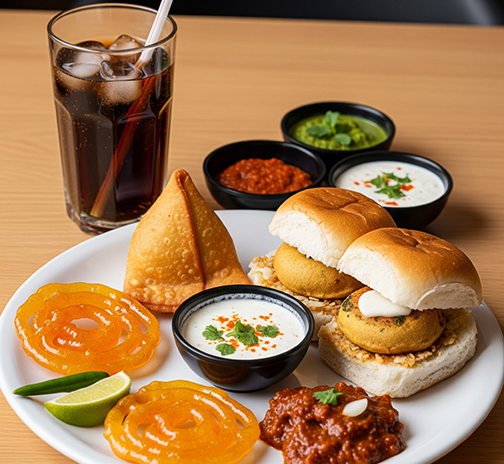

In a significant move to address India's escalating public health challenge of obesity and related lifestyle diseases, the Union Health Ministry has directed schools, offices, and other public institutions to display detailed information about the fat and sugar content of food sold in their canteens. This new initiative aims to serve as a visual prompt to promote healthier choices, empowering individuals to make more informed dietary decisions.
The directive requires canteens to install "Sugar and Oil Boards," for which the ministry has provided standardized templates. These boards are designed to be simple and easily understandable. For instance, an "Oil Board" will state the recommended daily fat intake for an adult (around 27-30 grams) and provide a visual breakdown of the fat content in popular snacks like samosas, kachoris, and vada pav.
Similarly, the "Sugar Boards" will highlight the recommended daily limits—no more than 25 grams for adults and 20 grams for children. These displays will use clear graphics, such as the number of teaspoons of sugar contained in common items like soft drinks, chocolates, and gulab jamun. The boards will also debunk common misconceptions, clarifying that alternatives like jaggery, honey, and maple syrup are just as detrimental as regular sugar, and will list the chemical names under which sugar can be disguised in processed foods.
This initiative is firmly grounded in national nutritional guidelines. The Indian Council of Medical Research (ICMR) recommends that added sugar should constitute less than 5% of total daily energy intake. The guidelines stress that added sugars provide "empty calories" with no other nutritional value and, if possible, should be eliminated from one's diet entirely.
The urgency of this measure is underscored by alarming public health data. A letter from the Union Health Secretary, Puniya Salila Shrivastava, cites the Global Burden of Disease study, which projects that the number of overweight and obese adults in India could surge from 18 crores in 2021 to nearly 45 crores by 2050. This would give India the second-highest global burden of obesity.
Furthermore, the health risks are particularly acute for the Indian population. Many Indians have a tendency to store fat in the abdominal region, not just under the skin but around vital organs. This visceral fat significantly increases the risk of diabetes, hypertension, and heart disease, even in individuals with a lower Body Mass Index (BMI).
By placing clear, actionable information directly in the environments where daily food choices are made, the government hopes to foster a culture of nutritional awareness. This simple, low-cost intervention is a crucial step in a broader strategy to mitigate a looming public health crisis and promote a healthier future for the nation.